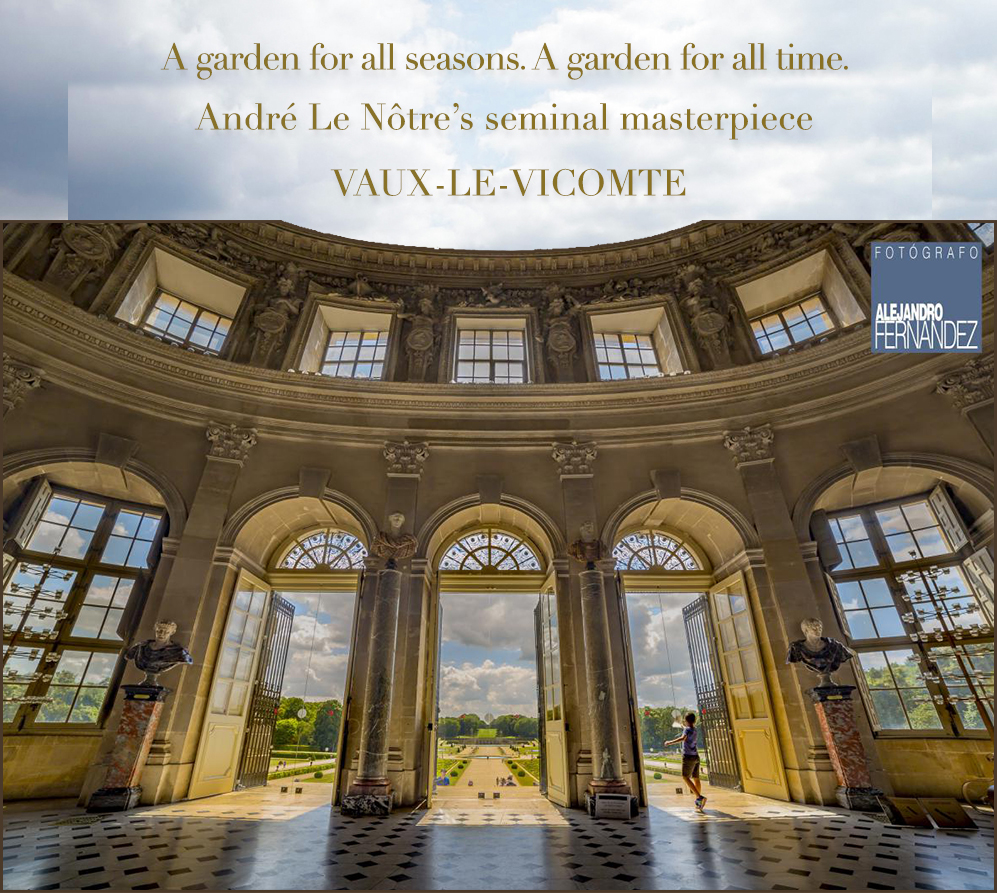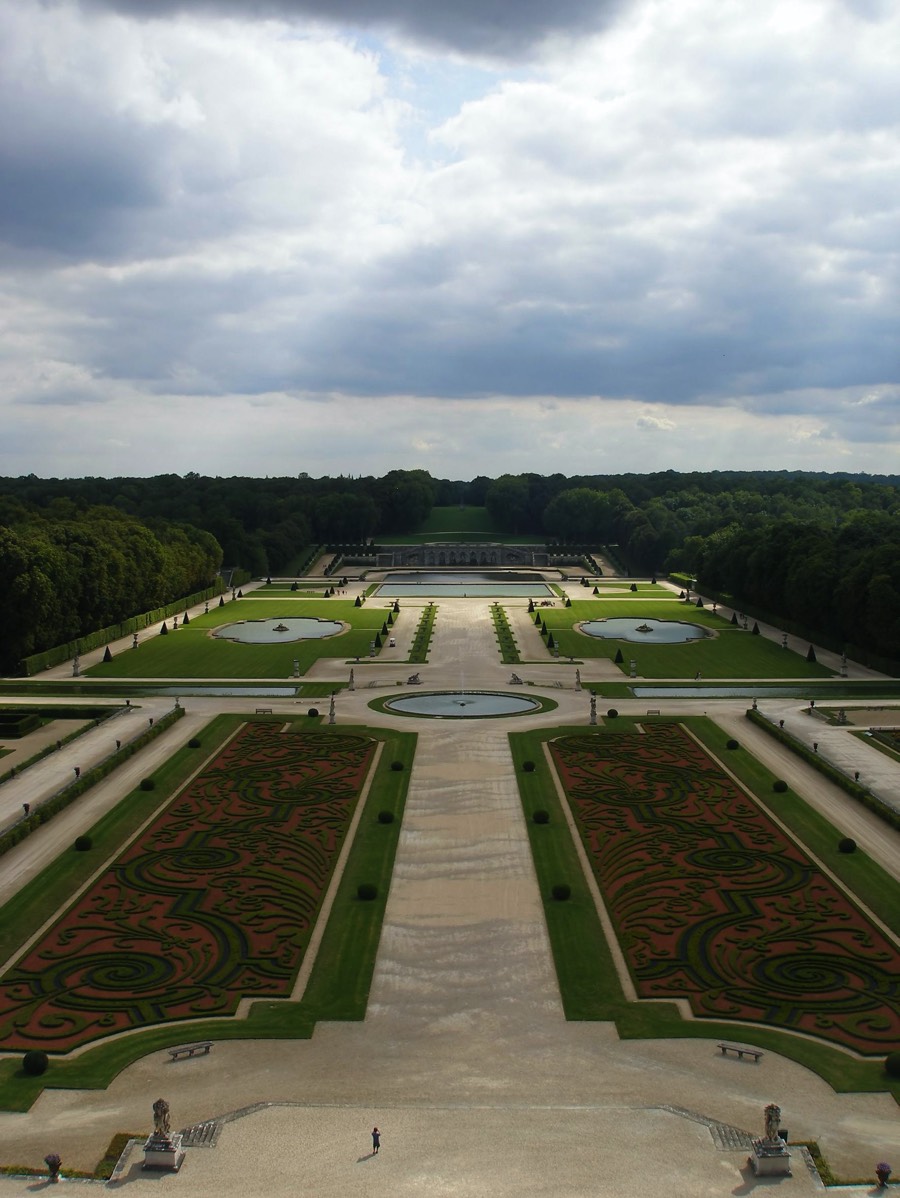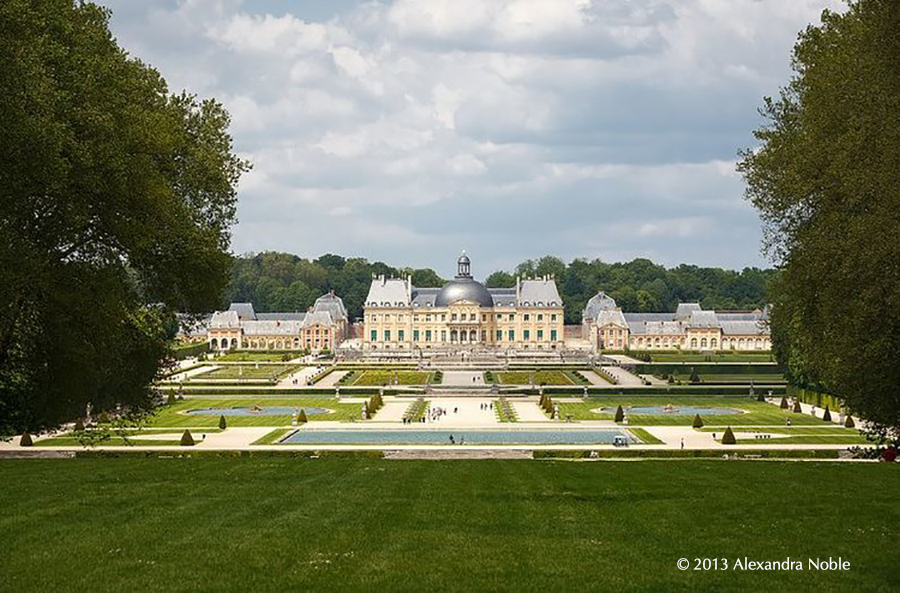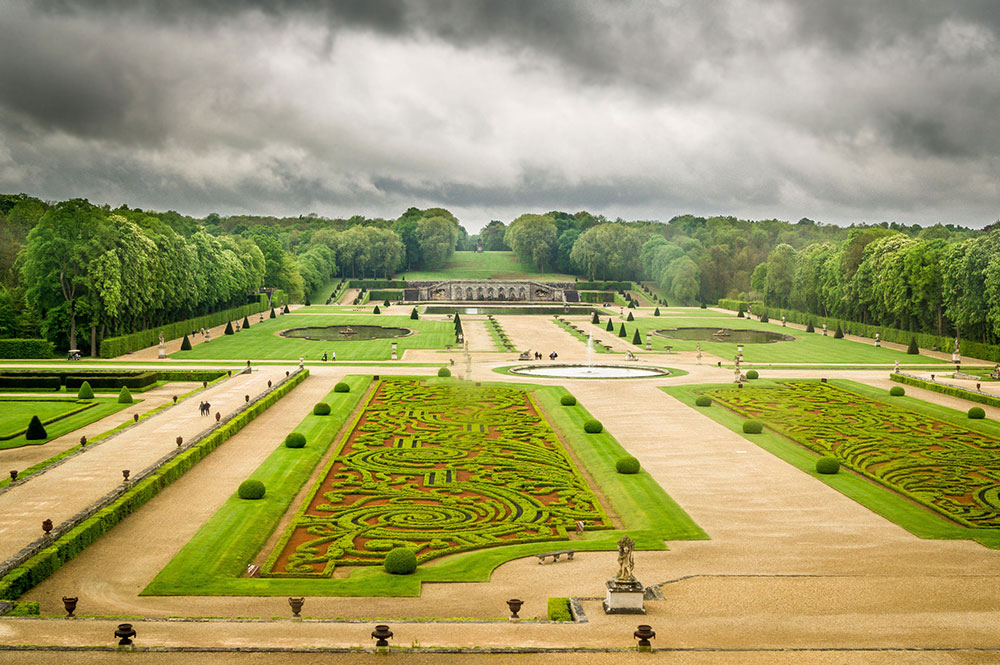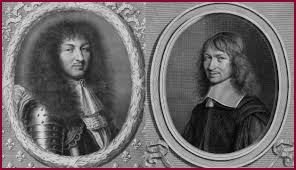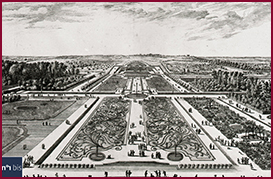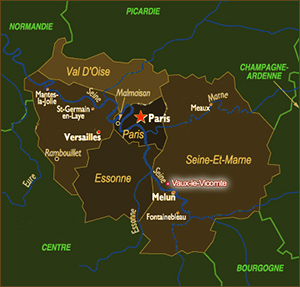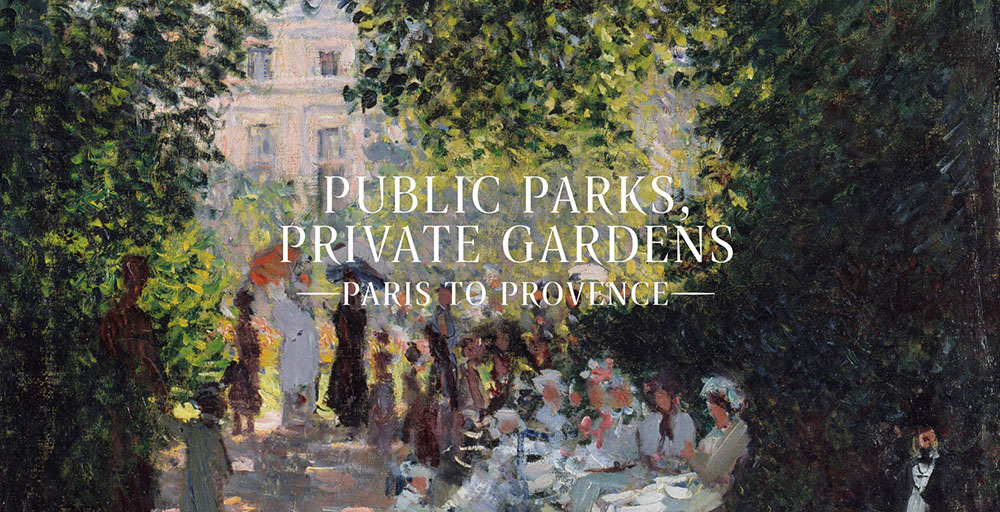View to the horizon of André le Nôtre’s Jardin à la française from the Château’s
Grand Salon. Photo by and © 2016 Alejandro Fernandez/Fotograf.
In 1657 Nicolas Fouquet, a generous patron of the arts and Superintendent of Finance to young King Louis XIV, privately commissioned what was to become a history-changing collaboration — by and between renowned landscape gardener André le Nôtre, classical baroque architect Louis Le Vau, and artist Charles Le Brun. Foquet’s brief: for the three to work as a team, to bring the aesthetics and experience of château and garden into a grand, whole of a piece — unlike anything France, or the world, had ever seen.
“The magic of Vaux lies in its unity,
house and gardens conceived of as an integrated ensemble.
Given free rein at Vaux-le-Vicomte by his admiring patron, Le Nôtre calculated ways to bring building and nature together in cunning strategies for the senses.”
— Simon Schama, Vaux-le-Vicomte: A Perfect Chateau, Envied by a King, New York Times, 1991
(above) The view of the Grand Axis, from the dome of the château. Photo by and © smn/123rf.
(For a sense of scale, notice the person standing on the terrace at the bottom of the frame.)
“In each age, beauty has a different interpretation. In 17th century France,
Andre Le Nôtre’s masterpieces at Vaux le Vicomte and Versailles
set the tone for European gardening for a century.”
— Audrey Hepburn, Gardens of the World, “Formal Gardens”
By design, to the eye as well as to the camera, the view from the château of Le Nôtre’s virtuosic garden composition intimates a formal, orderly progression of fine parterres, geometric shapes, water features and walking paths across a seemingly flat, open expanse within an advancing perspective through to the horizon. Hiding in plain sight — Le Nôtre’s sentient spatial dimensions, perspectival distortions, use of water reflections and elevation changes.
"Vaux le Vicomte is the founding work of the French garden.
Theatrical majesty, formal perfection of lines and mastery of perspective. . .”
— Alain Baraton, chief gardener of the Palace of Versailles
This 10 second video (left) shows the clarity and enchantment of the château’s reflection at dusk in the Mirror Square water basin, approximately 500 meters south of the château, just above the Water Cascades and Grand Canal.
Garden Cultural Heritage Spatial Functionalities:
Anamorphosis abscondita at Vaux-le-Vicomte
(above) Photo by and © Stephane Debove, 123rf.
“The garden is incredibly successful at
breaking down the scale of the vast land —
so it relates to the scale of a human being.
Whilst exploring the grounds, one feels as if
they are entirely consumed within the design.”
— Vaux-le-Vicomte: The Garden of Perspective by Alexandra Noble
A certain history of taste
This virtual, multi-media exhibition produced by the Palace of Versailles and the Palace of Vaux-le-Vicomte juxtaposes the King’s and Fouquet’s respective, singular artistic ambitions, aesthetic influences and motivations — as well as historical forces that set them against one another. First published in 2015, to bring fresh insights to the 300 and 400 year anniversaries honoring the King’s death in 1715, and Nicolas Fouquet’s birth in 1615. Shown in four sections: Architecture, Interior Decoration, Art of Gardens, and Artists.
In his Alain Elkann interview Alexandre de Vogüé, too, rectifies the famous legend of the King’s jealousy of Nicolas Foquet.
Engraving from Israel Sylvestre:
“Fig 5. The Grounds Gardens of the Chateau of Vaux — at The Time of Their Completion” The Architectural Record, Vol. XVIII, December, 1905, Frederick Lees
In 1875 Alfred Sommier rescued Vaux le Vicomte
— at its nadir — from the auction block.
George Blagden as Louis XIV at Vaux le Vicomte in the period drama series Versailles. Canal+. (Below) in the Grand Salon.
From James Bond to Marie Antoinette - films shot at the Vaux Le Vicomte palace, on Culture France, with article and podcast by RFI’s Rosslyn Hyams on Culture France, — explores memorable scenes from over 50 motion pictures filmed at Vaux since opening to the public in 1958.
Click here for essential information about opening times and access in 2025.
Click here for essential information
about opening times and access
Gardens of the World with Audrey Hepburn: Archive, France
Monet’s Gardens at Giverny and Jardin du Luxembourg
A Glimpse from the Archives • A Glimpse from Today
A Profusion of Roses à la française
For Generations Meiji Jingu Forest • A Quintet of Cloudscapes
The Happy Art of Biodiversity: Sculptillonnage

The Met’s Public Parks, Private Gardens: Paris to Provence exhibition presented some 150 works by more than 70 artists, spanning the late eighteenth through early twentieth century. Anchored by Impressionist scenes of outdoor leisure and daily life, this rare assemblage — on exhibition in 2018 — was drawn from seven curatorial departments at The Met and supplemented by a selection of private collection loans. 114 Select Exhibition Objects can be viewed online. Along with The Met’s related videos: Claude Monet Painting in His Garden at Giverny (1915), and The Greening of Paris 1852-1870.
The emergence of the Impressionist movement in France during the late
19th century coincided with the birth of modern Paris and a
grand transformation of her environs and landscapes.
The growing importance of parks and gardens in French life during this period is richly illustrated by paintings, drawings, photographs, prints, illustrated books, and objects in The Met collection by artists extending from Camille Corot to Henri Matisse, many of whom were gardeners themselves, across five exhibition galleries: Revolution in the Garden; Parks for the Public; Revival of Floral Still Life; Private Gardens; Portrait in the Garden.
Public Parks, Private Gardens offers a fresh, multisided perspective on best-known and hidden treasures housed in a Museum that took root in a park: namely, New York's Central Park, which was designed in the spirit of Parisian public parks of the same period.
Le Parc Monceau’s first exhibition was in 1879 in Paris at “4me exposition de peinture [4th Impressionist exhibition].
In the Met’s permanent collection, Le Parc Monceau’s last exhibition in Paris was in 1974 — Centenaire de l'impressionnisme at the Grand Palais
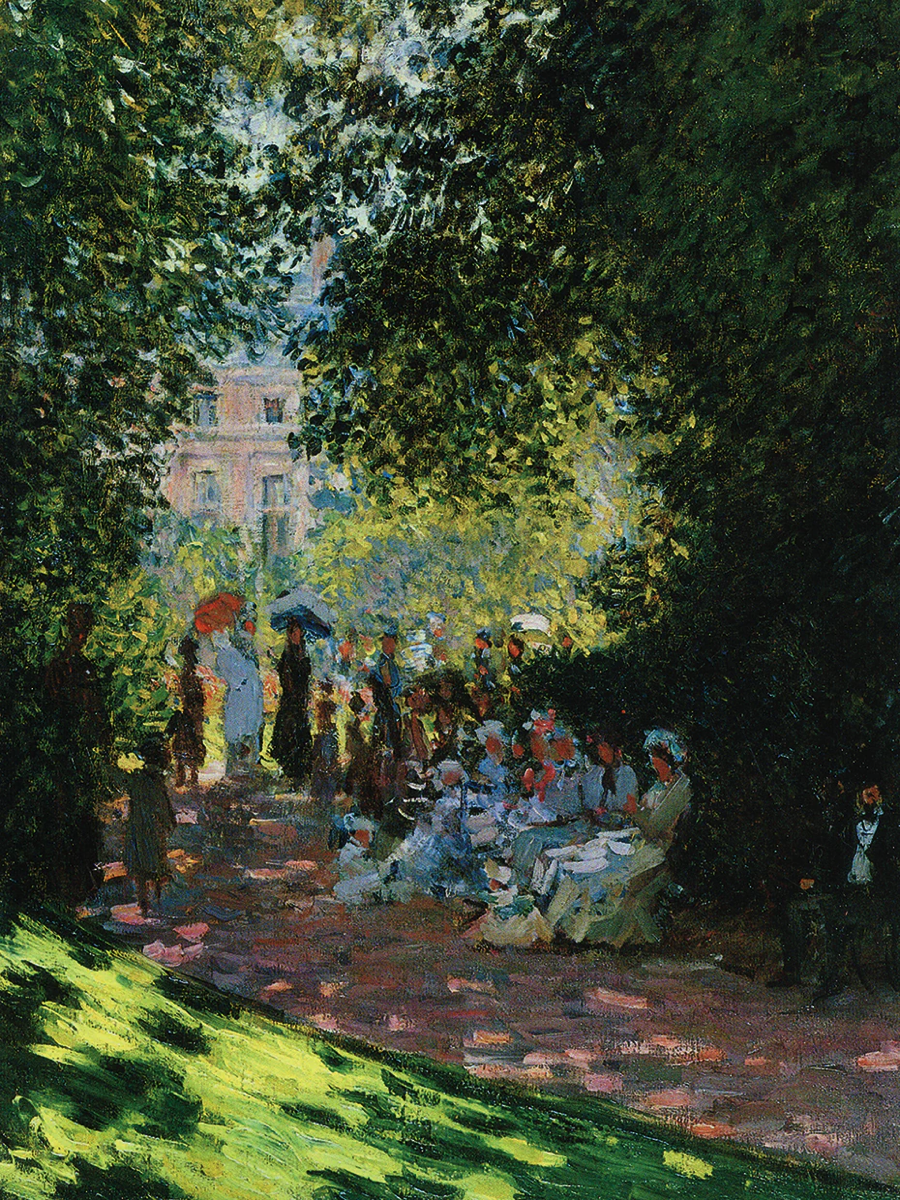
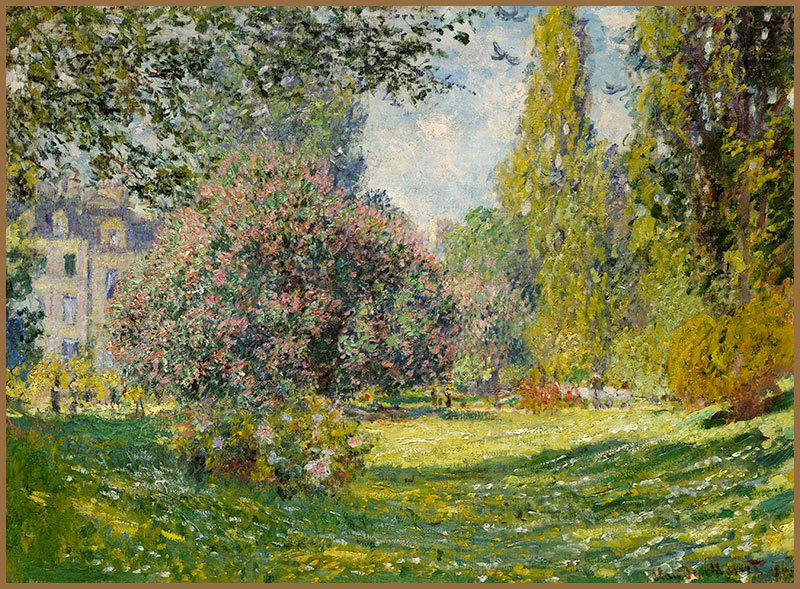
Paris 1874
A glorious new exhibition by
Musée d’Orsay, the Musée de l'Orangerie, and the National Gallery of Art, Washington
in celebration of the origins of Impressionism in its 150 anniversary year.
Inventer l'impressionnisme
Du 26 mars au 14 juillet 2024
Musée d’Orsay, Paris
The Impressionist Moment
September 8, 2024 – January 19, 2025
National Gallery of Art, Washington, D.C.
The “Visitors to Versailles (1682-1789)” exhibition was the first on the subject, with over 300 rare and beautiful works from the late 17th century to the French Revolution. (Held at Versailles, 24 October 2017 to 25 February 2018, then at The Met in New York, 9 April 2018 to 29 July 2018.)

Organized by the Palace of Versailles and the Metropolitan Museum of Art, the exhibition brings together notable works from The Met, the Château de Versailles, and over fifty lenders to highlight the experiences of travelers from 1682, when Louis XIV moved his court to Versailles, to 1789, when the royal family was forced to leave the palace.
As noted in Assembling a Grand Exhibition: How Visitors to Versailles Came to Life, the exhibition took over half a decade to plan and bring about.
Courtesy and © RMN-Grand Palais/Art Resource, NY,
photo by Christophe Fouin
Courtesy and © RMN-Grand Palais/Art Resource, NY,
photo by Christophe Fouin
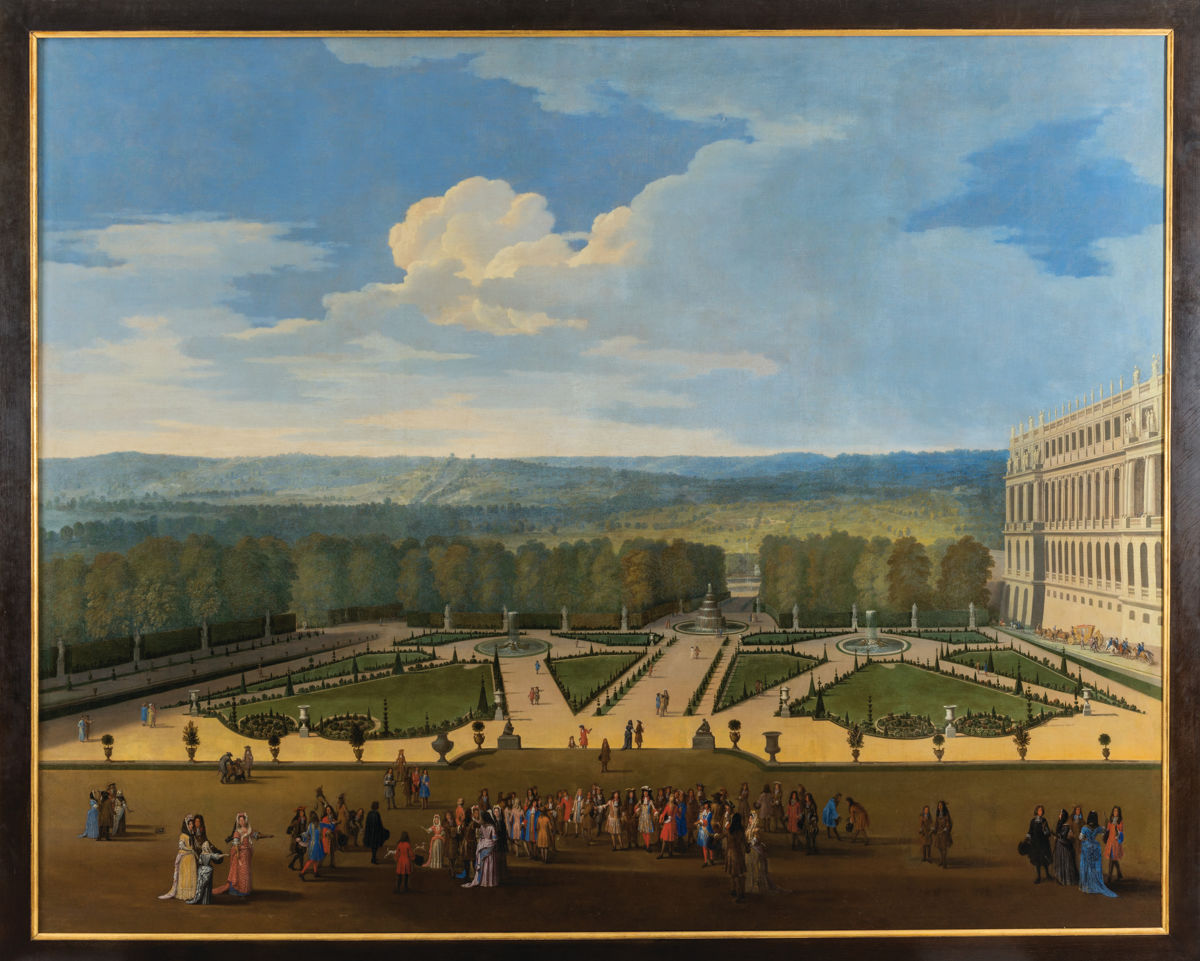
“Louis XIV enjoyed daily walks (regardless of the weather) in the gardens of Versailles, which offered visitors an excellent chance to see the king.
In Promenade of Louis XIV in Front of the North Parterre, ca. 1688, Étienne Allegrain, the monarch is accompanied by his gardener, André Le Nôtre, on his right — as well as by courtiers and officials responsible for the maintenance of the royal residences.”
In the present day, millions of visitors come every year to the Palace and Gardens of Versailles. The Gardens and Park are open every day, except when there is inclement weather; access is free to all,
except on days with Musical Fountains Show or Musical Gardens.
Click here for essential information
about opening times and access in 2025
Since the start of the 21st century —
following the devastating winter storms in late 1999
— massive re-plantings authentic to André Le Nôtre’s
original designs and concepts, and major restorations
have been underway at Versailles.
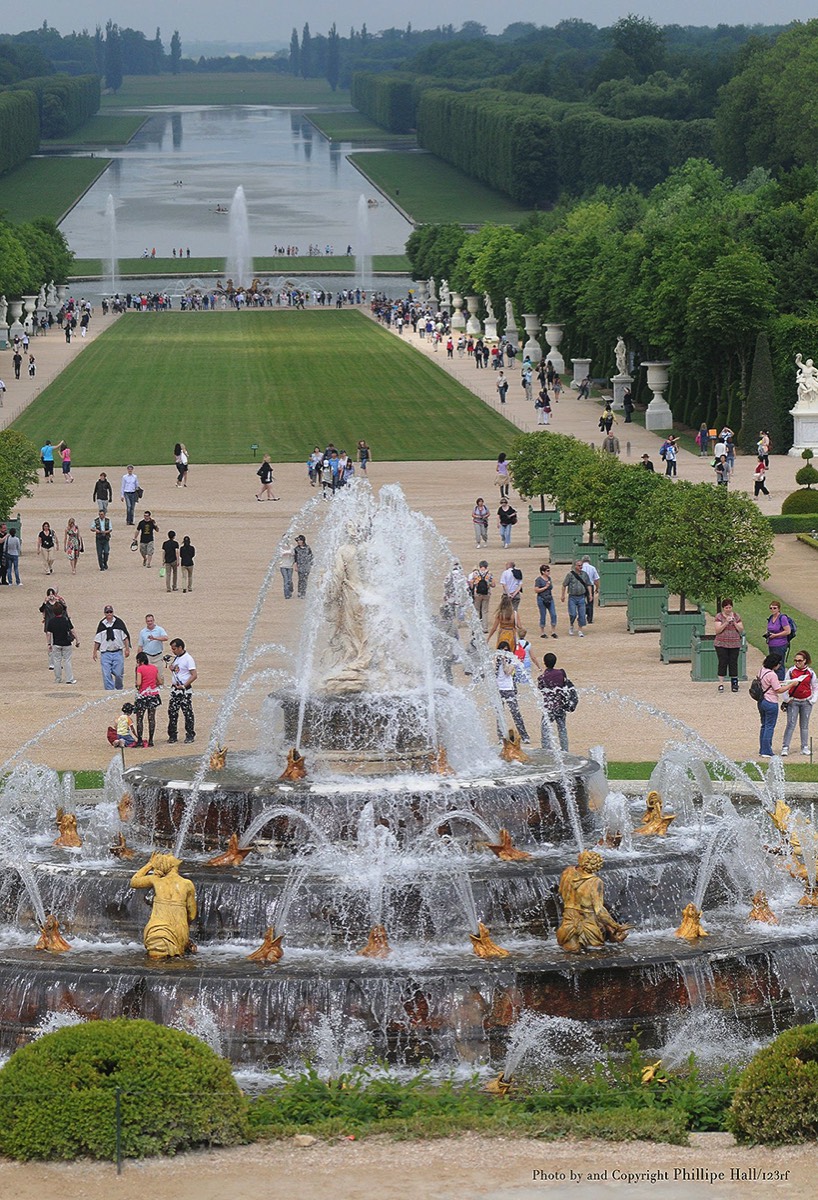
(Above) The beautifully restored Latona’s Fountain in the foreground of the central east-west axis
— aptly named The Grande Perspective — as it continues on to the
Royal Way or Great Lawn, Apollo’s Fountain, and the Grand Canal in the Park.
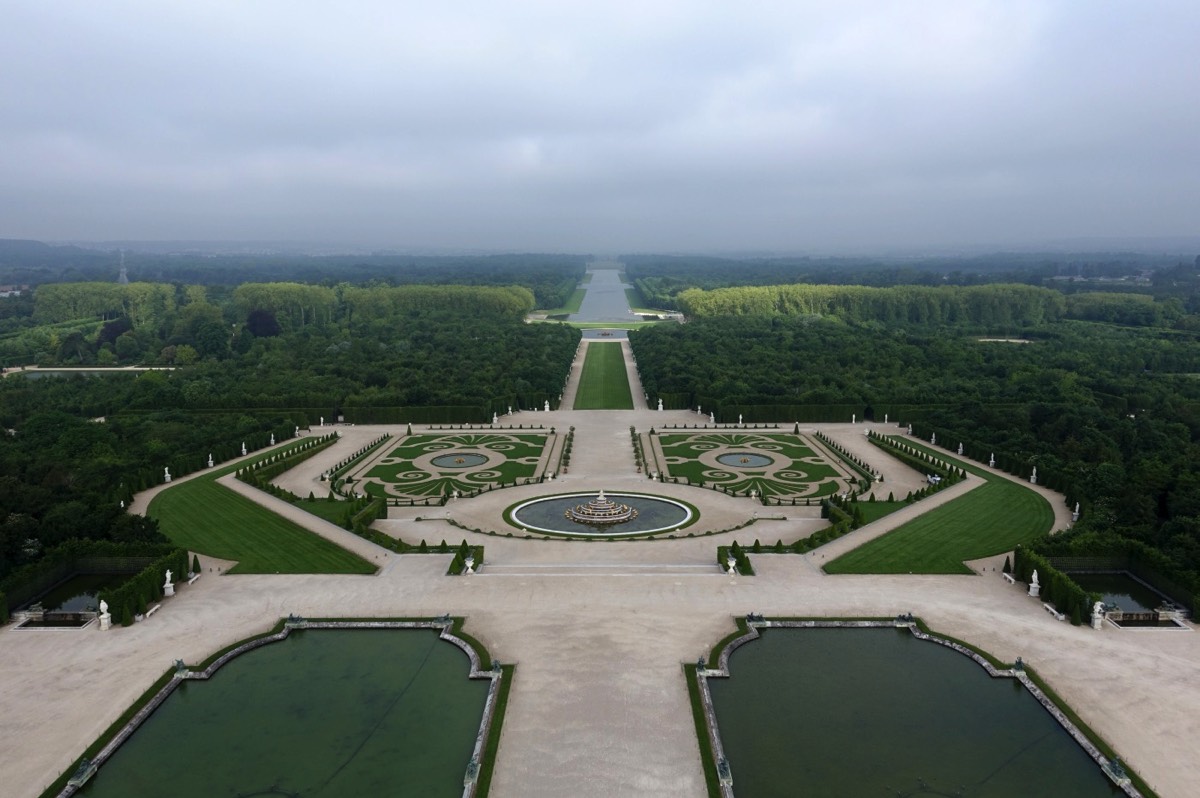
The Grande Perspective: Photo © Château de Versailles
The Grande Perspective reaching as far as the eye can see to the horizon — viewed as intended from the Hall of Mirrors, just behind and above the large rectangular pools of the Water Parterre. As can be seen in the fully restored Latona’s Parterres flanking the Fountain, Le Nôtre’s impact of scale and fineness of patterns masterfully anchor the composition.
“From the first steps, you don’t see that there is a fountain below. It’s only when you reach
the edge of the terrace that you realize that it’s there, Then you see these three sections
of white, green and blue — the paths, the lawns and the canal. And you start to dream.
Because of the slope of the grass, you feel the water is going up to the sky.
You have to let yourself be penetrated by the place.” — Louis Benech
A Watershed Moment: Versailles’ New Water Theater Grove — Bosquet du Théâtre d'Eau, Introspective Magazine
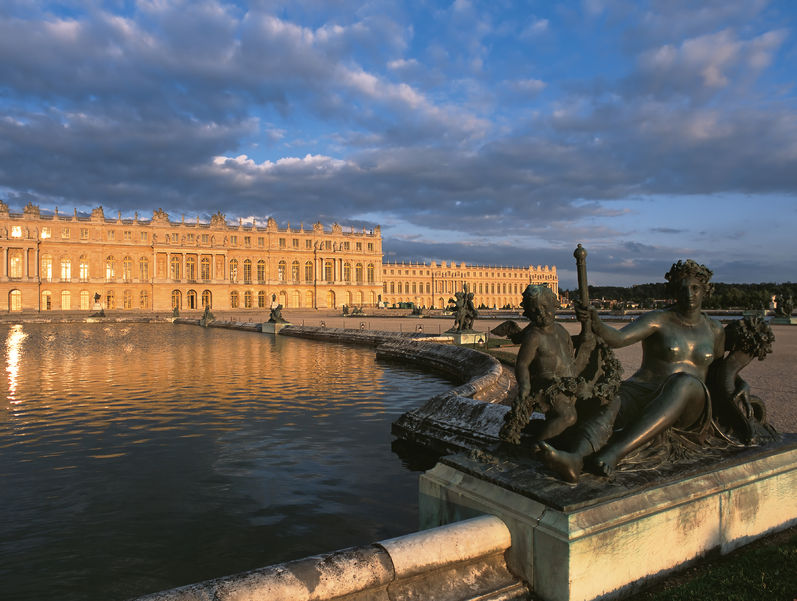
Reflections on the Palace and Water Parterre as the Sun Sets over the Grande Perspective: Photo by & © Gaspard Walter, 123rf
The Palace and Park of Versailles was inscribed in 1979 as a UNESCO World Heritage site, across three selection criteria: (i) to represent a masterpiece of human creative genius; (ii) to exhibit an important interchange of human values, over a span of time or within a cultural area of the world, on developments in architecture or technology, monumental arts, town-planning or landscape design; (vi) to be directly or tangibly associated with events or living traditions, with ideas, or with beliefs, with artistic and literary works of outstanding universal significance.
